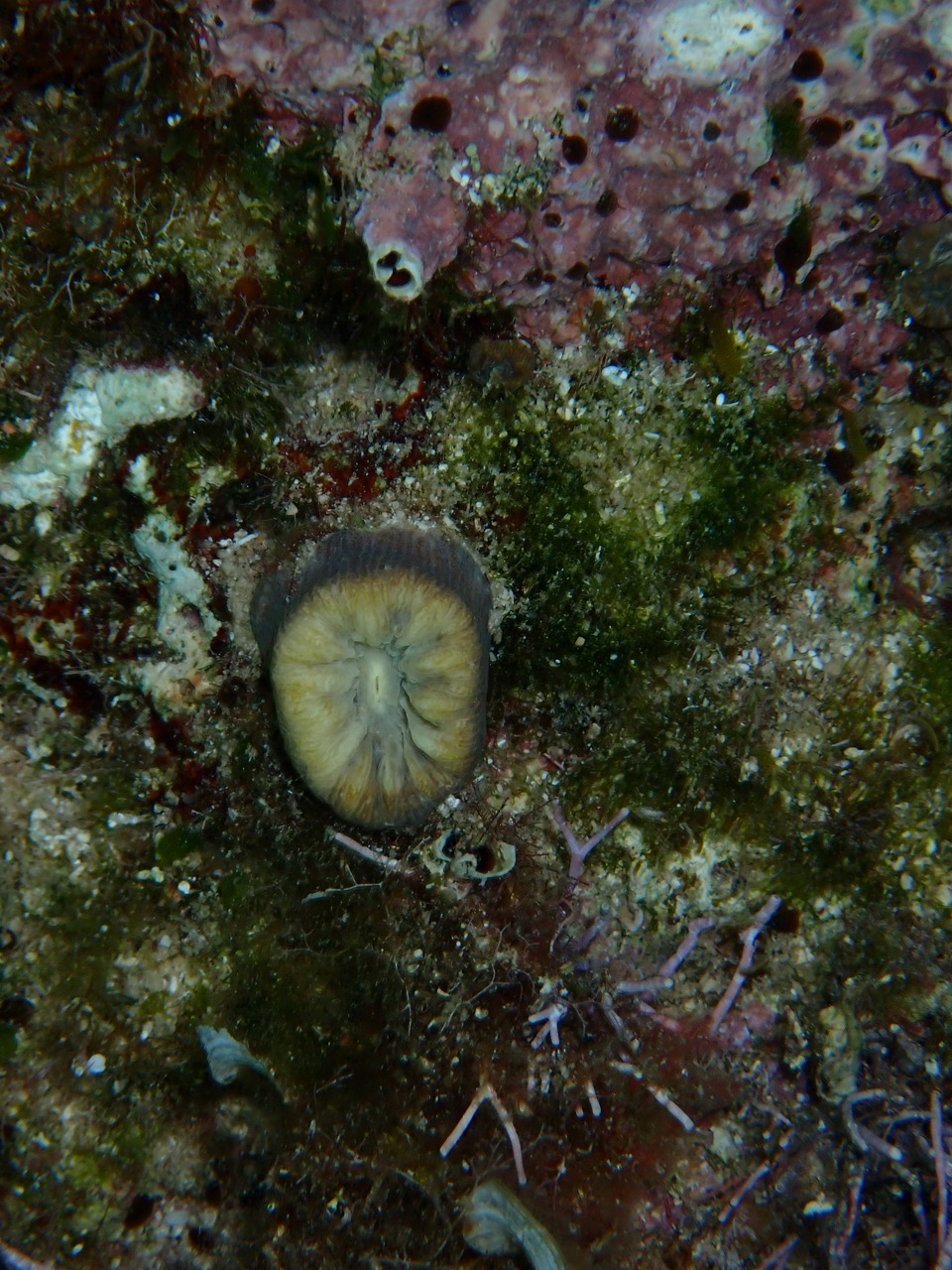Next few photos were taken in Luka Soline in Pakleni otoci near island of Hvar. It is not just great area for snorkelling, but we also had a wonderful meal in restaurant Dionis, which remains our favourite restaurant in Adria. The restaurant is some 20 minutes to the left and up the hill, this is how our anchorage looked like,...
...and this is what I found under water along the rocks. I like the English name, Mermaids cups, better than Slovene one, apneni dežniček (Acetabularia acetabulum).
This year there was a little bit of panic about the Fireworm or ognjeni črv (Hermodice carunculata), and finally I saw not just one, but two in this bay. I can't really see how this can be a big problem, those two were the only ones I've seen in many hours of snorkelling, not like in Caribbean, where you see one almost on every rock. And if one obeys the rule of not touching things under water, all should be fine. But it's pretty, isn't it?
This is one of the most colourful fish in Adria, the Ornate wrasse or pavji knez (Thalassoma pavo).
I was thrilled to have found my first Octopus or hobotnica (octopus vulgaris), although it was merely a baby.
Blennies and Gobies are so pretty, I can't stop taking photos of them - this is Zvonimir's goby or jelenoroga babica (Parablennius zvonimiri).
There were lots of Mullets or ciplji (Liza spp.).
This Blenny I don't see often, and I couldn't find the English name. In Slovene it's velikooka babica (Lipophrys trigloides).
And another Slug pisanček (Thuridilla hopei). I'm really happy to find them, as they are so small.
I've often seen these two together - the Striped red mullet or progasti bradač (Mullus surmuletus) with Flounder or morski jezik (Arnoglossus spp.). Looks like flounder is waiting for mullet to dig anything edible out of the sand.
Black sea urchin or črni morski ježek (Arbacia lixula) is very common and maybe boring, unless its needles are stuck in your foot. But I think this photo shows it in good light.
Forkweed or ploščata razcepljenka (Dictyota dichotoma) has this luminescent shine about it.
This is Purple sea urchin or vijoličasti morski ježek (Paracentrotus lividus).
One of the prettiest Hermit crabs or rak samotarec, this time in blue.
It could be called "Lady with a flower" - a Blenny or babica with two of the Fan worms or črvov cevkarjev.
Another Red-black tripplefin or rdeči sprehajalček (Tripterygion tripteronotus).
This is the biggest Goby in Adria - a Giant goby or skalni glavač (Gobius cobitis).
We made two stops in bay Uvala Nečujam on island of Šolta. At the South end of the bay there are remains of an old Roman wall, now they are 60cm under water. Of course I had to see it. The water was not very clear, and it's overgrown with algae, but there were many fish there.
On the surface the Roman wall is marked by string of buoys.
But snorkelling is much better in neighbouring bay, Uvala Kasjun, where the water is much clearer and there's less boats, less tourists and less houses on the shore. There I saw a school of Mediterranean sand smelt or veliki gavuni (Atherina hepsetus).
And some Trumpet anemones or marmornate morske vetrnice (Aiptasia mutabilis).
Finally I also found a Black-headed blenny or črnoglava babica (Lipophrys nigriceps).
There were several Warty crabs or kosmaji (Eriphia verrucosa) there. This one was already looking like he's working with weights in the gym every day,...
...but this one was even bigger.
There were several Beadlet anemones or rdeče morske vetrnice (Actinia equina) there, but unfortunately none with its tentacles extended.
And one more pretty Red-spotted horseshoe or oranžni cevkar (Protula intestinum).



























Once more, fantastic photos! Thanks for bringing us along via your blog posts, Lili.
ReplyDelete